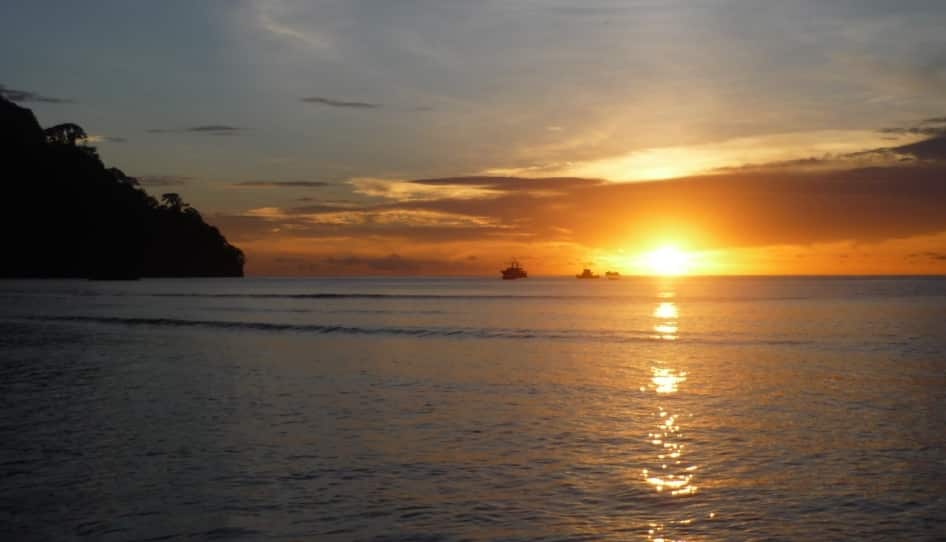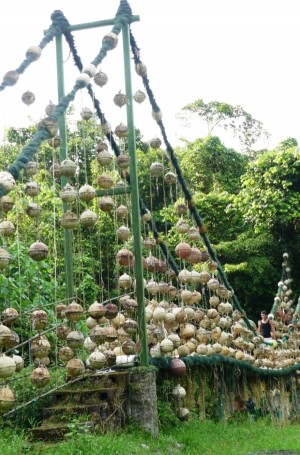
- Home
- Accommodation
- Activities
- Area Info
- Maps
- Photo Galleries
- Real Estate
- Travel

Located in the Eastern Tropical Pacific, about 300 miles to the southwest of Cabo Blanco, Costa Rica is the famous Cocos Island Marine Park. A rough yet remarkably emerald island, this World Heritage Site is the strikingly beautiful crown that adorns Costa Rica’s royal garb of the country’s several National Parks.
Costa Rica acquired Cocos Island in the late 19th century. From 1872 and 1874, the Costa Rican government set up a prison on the island and also initiated their treasure-hunting voyages. However, much to their disappointment no riches were unearthed here as per popular legend. In 1898, a couple of well known naturalists proposed that the island be treated as a preserved zone. In 1978, it was anointed a Costa Rican national park, part of the country’s heritage and a significant natural resource. Originated from a volcano, the island’s generous mineral soil sustains a tropical lowland ecosystems and a cloud forest.

Cocos Island National Park comprises the entire island, preserving the nation’s lands and waters. This is considered one of Costa Rica’s most isolated and least inhabited national park and can be accessed by a 36-hour boat ride. It hosts some of the world’s most striking scenery and unique flora and fauna. Right off the coast of the Island, the Pacific Ocean is filled with coral reefs and an unbelievably spectacular marine life. This is the largest scalloped hammerhead cleaning station on the planet, attracting hundreds of these creatures every day. Cocos Island is an important breeding environment for other big pelagic species like dolphins, manta rays and eight varieties of sharks.
Teeming with a large seascape and a flourishing wildlife, Cocos Island is often referred to as one of the world’s top ten scuba diving destinations. It’s a haven for shark divers. The serene waters and rocky peaks encircling these shores lure hundreds of hammerheads, white tip reef sharks, jacks, and rays in addition to least 32 types of reefs, 118 mollusks and about 250 fish species.
The island has over 400 known species of insects, out of which 65 (16%) are endemic. Two species of lizard are found on the island. Nearly 90 bird species have been reported. The island and adjacent rocks are host large nesting colonies of migratory seabirds including the brown bobby, the red footed bobby, the great frigatebird the white tern and brown noddy. Seven species of land birds inhabit the island, including three endemics such as the cocos cuckoo, the cocos flycatcher and cocos flinch. The island has five land mammal species, including pigs, deer, cats and rats.
The best time to dive Cocos Island is the May to December monsoon when the conditions are the roughest, the currents strongest, the visibility the lowest and divers have the best chance of spotting the biggest animals. June, July and August are known to be the ideal months for hammerhead spotting.
http://www.costarica-scuba.com/about-cocos-island/
http://www.costaricajourneys.com/cocos-island/
http://www.costaricajourneys.com/scuba-diving-cocos-island/
www.visitcocosisland.com – Portal for scuba diving and tourism info for Cocos Island / Isla de Coco in Costa Rica
My new favorite restaurant, Clandestina is not to be missed by food lovers staying anywhere near to Montezuma. Established in March 2015, Clandestina is the new kid on the block. The Oregon/Tico collaboration is a winner among locals and travelers alike, with artisan craft beers, made onsite by Butterfly Brewing Co. and delicious, exciting […]